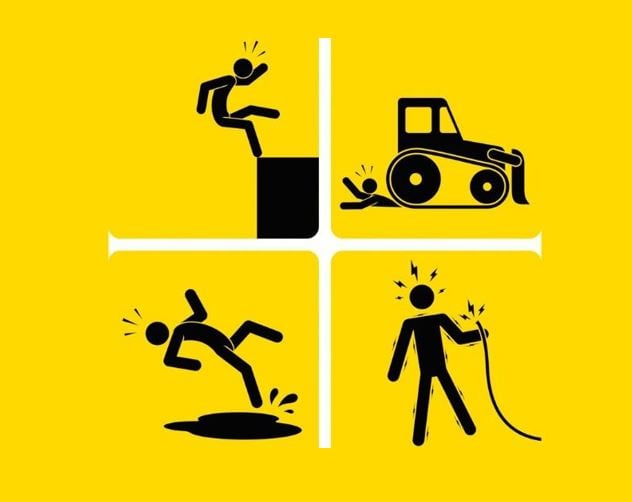
As the renewable energy industry grows, companies must be mindful of safety hazards that could impact their employees and operations. From chemical spills at manufacturing plants to faulty wiring in solar installations, potential risks could lead to injury or worse. Fortunately, understanding the most common safety hazards can help ensure a safe and productive workplace for everyone involved.
In this blog post, we’ll discuss five safety hazards that renewable energy companies should watch out for to comply with OSHA’s renewable energy safety regulations and protect their workers from harm.
Electrical safety hazards – Electrical shock, arc flash, and fire risks
Electrical safety hazards are among the gravest threats renewable energy safety companies can face. Shock, arc flash, and fires are dangerous events that can potentially put personnel, equipment, and facility safety at risk.
Companies should notice electrical safety as renewable power sources become increasingly popular. Renewable energy companies must meet context-specific safety standards to protect workers and keep operations running smoothly.
The best renewable energy companies invest in comprehensive electrical safety training for their staff and adequate protective equipment such as fire retardant clothing, grounding protection systems, and automated shut-off switches where appropriate. Creating a culture of vigilance around electrical hazards is critical for renewable energy companies striving to keep their operations safe, efficient, and functional.
Mechanical safety hazards – Unstable machinery, pinch points, and moving parts
In mechanical safety, it is crucial to be aware of potential hazards that may lead to injuries or even fatalities when operating or working near machinery. Dangerous machinery poses a significant risk, as it can unpredictably shift or collapse, causing harm to nearby workers or damage to other equipment.
Pinch points are equally dangerous, which are present in many types of machinery and can result in severe injuries or amputations when body parts are caught between two objects. Also, proper caution must be taken around moving parts, as they can entangle clothing, hair, or limbs, leading to entrapment, injury, or worse.
For this reason, organizations must implement comprehensive safety plans, training, and awareness campaigns to minimize the risk of accidents involving hazardous machinery, pinch points, and moving parts, ensuring a safer working environment for all.
Chemical safety hazards – Exposure to hazardous materials and toxic fumes
Chemical safety hazards are a critical concern in various industries and workplaces. Exposure to hazardous materials and poisonous fumes can severely affect workers, the environment, and public health.
The risk of encountering these harmful substances arises from diverse scenarios, such as unintended chemical reactions, spills, leaks, and poor storage practices. Consequently, it is essential for businesses to manage chemical hazards through proper training proactively, the use of appropriate protective equipment, and adherence to safety regulations.
Workers must be well-informed about the properties and risks associated with specific chemicals, allowing them to handle substances carefully and adopt necessary precautions to limit their potential exposure. Furthermore, in an emergency, swift action and effective response measures will be crucial in mitigating the impact of hazardous materials and toxic fumes, underlining the importance of regular drills and thorough emergency planning.
Through these comprehensive efforts, workplaces can enhance the safety of their employees and surrounding communities while minimizing the risks associated with chemical hazards.
Environmental safety hazards – Working in extreme weather conditions or confined spaces
Working in extreme weather conditions or confined spaces can present a range of environmental safety hazards for renewable energy companies. Weather extremes such as high heat or cold, heavy snow, and strong winds can create working conditions that are uncomfortable and dangerous for workers.
Similarly, working in confined spaces creates hazards when dealing with large equipment or materials stored in small areas. These risks should be taken seriously by renewable energy companies to ensure the safety of their employees while they perform intricate tasks in these challenging environments.
Employers should use specialized techniques to train workers on potential safety hazards and provide appropriate equipment like face masks, protective goggles, and gloves to reduce the risk of injury. Proactive measures like these can help mitigate dangers posed by extreme conditions and confined workspaces.
Ergonomic safety hazards – Repetitive strain injuries and fatigue caused by long-term exposure to vibrating equipment or awkward postures
Ergonomic safety hazards, particularly repetitive strain injuries and fatigue pose significant threats to individuals who experience long-term exposure to vibrating equipment or work in awkward postures. These concerns are not to be taken lightly, as they contribute to severe health complications, hindering workers’ physical well-being and adversely affecting productivity.
Repetitive strain injuries result from prolonged, repetitive motions that strain the body’s soft tissues, such as muscles, tendons, and nerves. Consequently, workers often suffer from discomfort, pain, and swelling, leading to a diminished quality of life. Similarly, enduring awkward postures while handling vibrating equipment can cause workers to experience fatigue, further increasing their susceptibility to accidents and injuries.
Thus, employers and employees must prioritize ergonomic safety measures, such as appropriate training and regular breaks, to maintain a safe and efficient work environment.
The renewable energy industry has enormous potential, but as it continues to increase, it’s important to remember the risks and safety hazards that come with it. Electrical safety hazards pose a risk of electrical shock, arc flash, and fire, while mechanical safety hazards involve safety concerns around dangerous machinery, pinch points, and moving parts.
Additionally, workers can face chemical safety hazards through exposure to hazardous materials and toxic fumes. Environmental safety hazards involve dealing with extreme weather conditions or confined spaces. In contrast, ergonomic safety hazards include dangers such as repetitive strain injuries or fatigue caused by long-term exposure to vibrating equipment or awkward postures.
A thorough understanding of these potential risks is essential for ensuring the health and wellness of renewable energy employees while maximizing productivity and profits. Renewable energy companies can create safe and thriving work environments with solid protocols to anticipate these potential issues before they arise.
